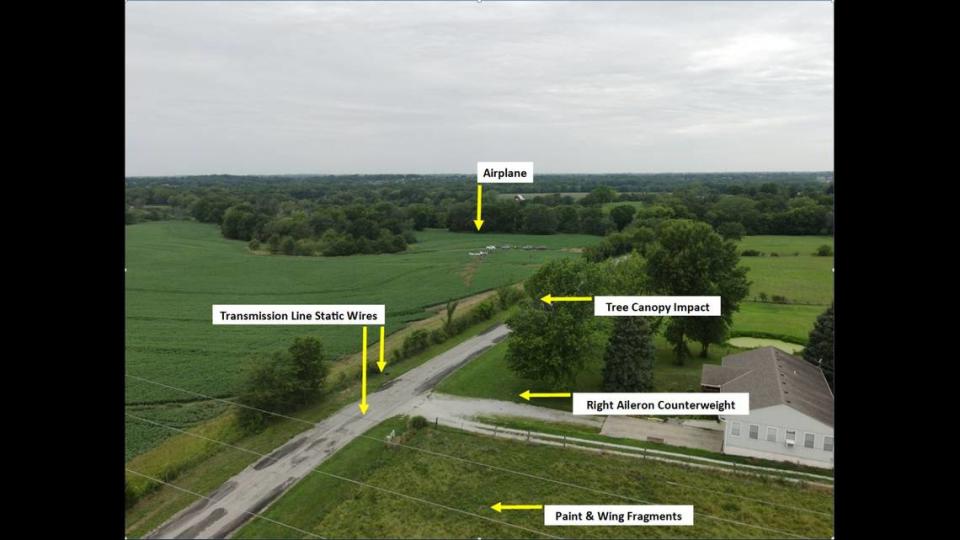Plane had difficulties taking off prior to crashing into Missouri field, killing pilot: NTSB
A plane that crashed into a soybean field near Kearney, Missouri, last month killing its pilot leaked while being fueled and had difficulties becoming airborne during takeoff, according to a preliminary report from the National Transportation Safety Board.
NTSB investigators found that at the time of the crash, the plane was flying to Kansas under a special maintenance ferry flight permit to complete an annual inspection, according to the report.
The privately owned plane, a twin-engine Piper PA31P, crashed about 9:30 a.m. July, shortly after taking off from the Midwest National Air Center at 13106 Rhodus Road near Mosby, Missouri.
The pilot, Alan “Doug” Moler, 79, of Valley Center, Kansas, was killed in crash. He was the only person on board.
The plane is co-owned by Dinah and William Ragan of North Kansas City, according to the FAA aircraft registry.
According to the preliminary report, the plane’s most recent annual inspection had been completed in 2015. Multiple witnesses told investigators that the owner and a mechanic had been working on the plane for about six months.
About two weeks prior to the crash, the aircraft’s right engine was difficult to start and would not produce full power during a ground test, witnesses told investigators. The plane’s inboard fuel tanks also “horribly” leaked fuel whenever the aircraft was fueled, they said.
At about that same time, the plane’s owner received a special flight permit to ferry the plane from Mosby to Kingman, Kansas, to complete an annual inspection. Three other pilots declined to perform the ferry flight, witnesses said.
During fueling before the crash, an unknown amount of fuel leaked from the right wing’s inboard fuel tank, according to the report. The mechanic told investigators that the plane had 140 gallons on board divided between both 50 gallon wing fuel tanks and 40 gallons in the right wing auxiliary fuel tank.
While taking off, the airplane veered to the right and attempted to rotate its nose off the ground before settling back on the runway, video from several cellphones showed. Near the end of the runway, the plane became airborne and began to twist to the right before it climbed parallel to the rising terrain, the report said.
“The witnesses observed the airplane barely cleared a line of trees past the departure end of the runway and made a left turn before it disappeared behind trees,” the report said.
A witness near the airport said he heard a loud airplane as it appeared from behind trees. Then, the witness saw the plane strike the top wire of power transmission lines before hitting the canopy of a large tree in the front yard of his home.
The plane banked to the left and crashed into a soybean field where it slid several hundred feet and caught fire.


